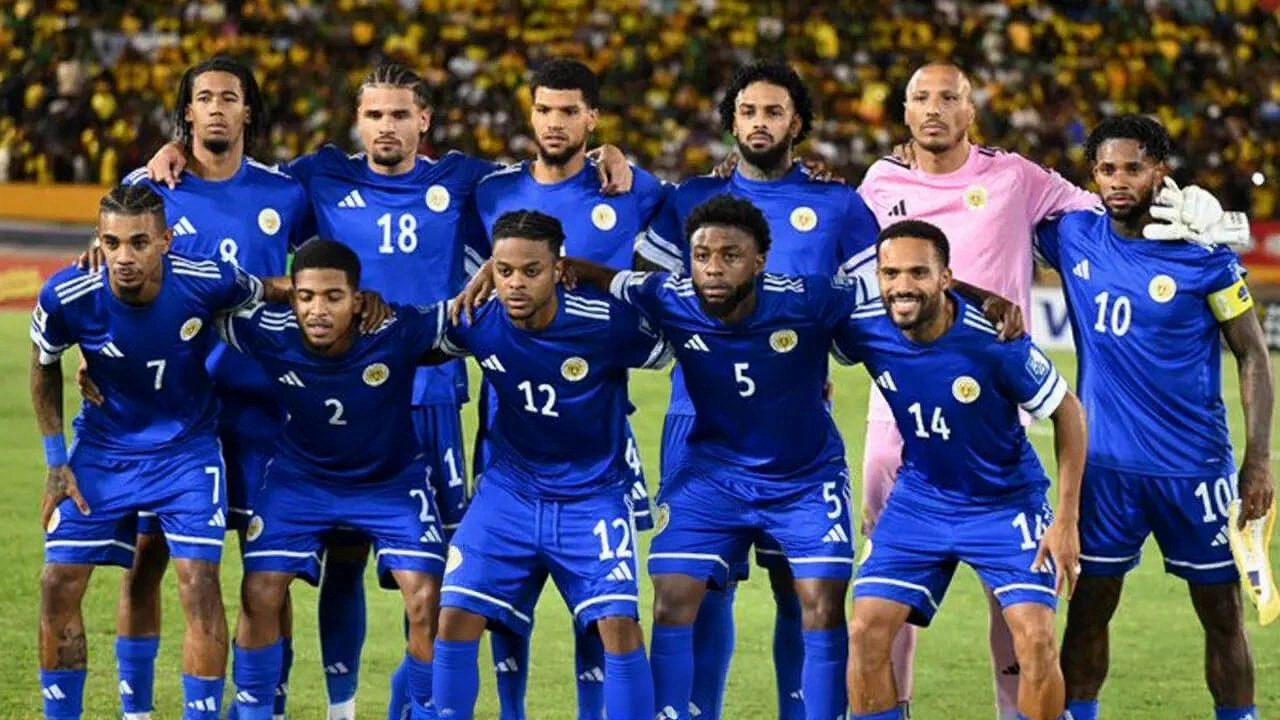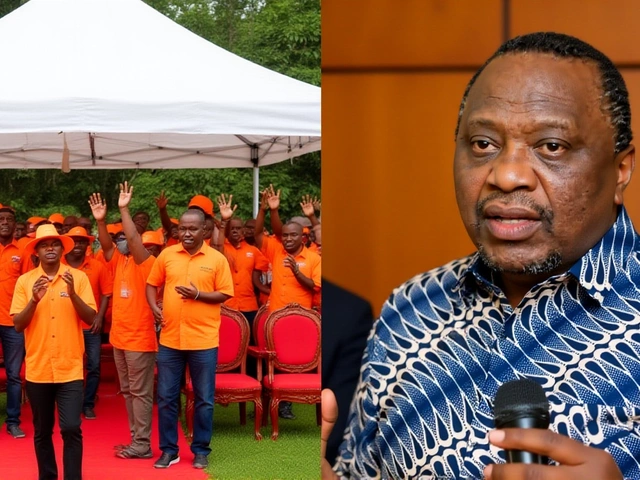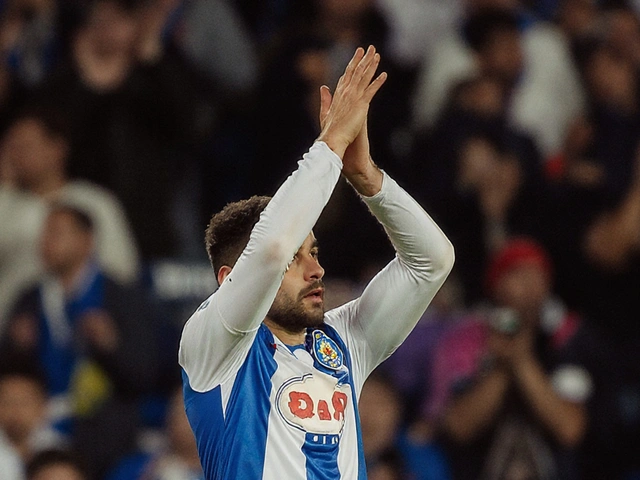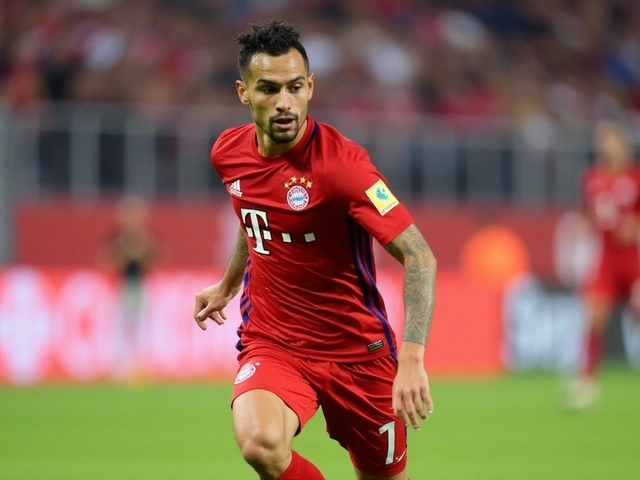On November 18, 2025, under the dim glow of Kingston’s Independence Park lights, a tiny Caribbean island with fewer people than a single NFL stadium holds changed football forever. Curaçao, population 156,115, held Jamaica to a 0-0 draw — not because they dominated, but because they refused to lose. That single point was all they needed. And with it, they became the smallest nation ever to qualify for the FIFA World Cup 2026United States, Canada, and Mexico, shattering Iceland’s 2018 record. This wasn’t luck. It was grit wrapped in blue-and-white stripes.
A Nation Built on Defiance
Curaçao’s journey to the World Cup didn’t start with stadiums or sponsorships. It started with a 2010 FIFA membership, just a decade after the dissolution of the Netherlands Antilles. For years, they were footnotes — known more for their blue liqueur than their blue team. But in Round One of CONCACAF qualifying, they bulldozed through Haiti, Saint Lucia, Aruba, and Barbados, winning all four games, scoring 15 goals, conceding just two. Then came Round Two: Jamaica, Trinidad and Tobago, Bermuda. Three wins. Three draws. No losses. Thirteen goals scored. Only three conceded. The math was brutal: they needed one point in Kingston. They got it. And the world took notice.The Architects Behind the Miracle
At the helm was Dick Advocaat, the 77-year-old Dutch tactician who once guided the Netherlands to the 1994 World Cup quarter-finals. He didn’t come for fame. He came for structure. His system was simple: defend like your life depends on it, counter with precision, and trust your overseas players. Ten of Curaçao’s 23-man squad play in the Dutch second and first divisions — not because they’re superstars, but because they’re disciplined. Midfielder Juninho Bacuna scored three goals in nine qualifiers. His older brother, captain Leandro Bacuna, once played for Aston Villa and Cardiff City, provided three assists. But the real hero? Striker Gervane Kastaneer. Five goals in six games. He didn’t just score — he carried the hopes of an island on his back.The League That Wasn’t Supposed to Exist
Curaçao’s domestic league, the Prome Divishon, has ten teams. None are professional. Most players have day jobs — teachers, mechanics, clerks. Training happens after work. Stadiums are concrete bowls with cracked bleachers. Yet, this patchwork system produced a World Cup team. The secret? Dutch influence. Many players grew up in the Netherlands, where Curaçaoan heritage is deeply rooted. The island’s diaspora didn’t just send money home — they sent skill, coaching, and belief. When FIFA expanded the World Cup from 32 to 48 teams in 2017, they didn’t just create space — they created possibility. Curaçao didn’t just take it. They owned it.What This Means for the World
The Gianni Infantino-led FIFA expansion was controversial. Critics called it a dilution. But here’s the twist: it gave hope to places like Cape Verde, Nepal, and now Curaçao. The final will be played at MetLife Stadium in New Jersey — capacity 82,500. That’s more than half of Curaçao’s entire population. Imagine: a team of 23 men, most of whom work regular jobs, walking out in front of a crowd bigger than their homeland. That’s poetry. And it’s not lost on them. Street parties erupted in Willemstad. Grandmothers danced in the streets. Children wore jerseys made from recycled plastic bags.The Cost of Hope
But not everyone is celebrating without reservation. Worswick, a Caribbean football analyst, warned: “Everyone assumes that, brilliant, this can only be a good thing… but there is a lesson to be learned, it’s not always positive.” He’s right. Curaçao’s government spends less than $2 million annually on football. The island’s healthcare system is strained. Unemployment hovers near 18%. Yet, for a few weeks, football gave people something money can’t buy: dignity. As Isaac, a local commentator, told WUSF: “The people are suffering and they’ve been suffering for years, and they’re just asking for hope, and this is what the team brought them.”What Comes Next?
Curaçao will be placed in one of the 12 groups when the draw happens in December 2025. They’ll face giants — Brazil? Germany? Spain? Doesn’t matter. They’ve already won. Their next challenge isn’t winning matches — it’s sustaining momentum. Will FIFA invest in their infrastructure? Will the Dutch FA help build academies? Will their domestic league turn professional? No one knows. But for now, the island sleeps a little easier. They’ve proven that size doesn’t determine destiny. Heart does.Frequently Asked Questions
How did Curaçao qualify for the 2026 World Cup despite having no professional league?
Curaçao’s national team is built almost entirely on players based in the Netherlands, where 10 of the 23-man squad play in professional Dutch leagues. The domestic Prome Divishon is amateur, but the diaspora has provided coaching, funding, and talent development. This model — leveraging overseas talent while maintaining national identity — mirrors smaller nations like Iceland and Northern Ireland.
Why is Curaçao’s population size such a big deal in World Cup history?
With 156,115 people, Curaçao is smaller than any nation to ever qualify — surpassing Iceland (364,000 in 2018). For context, their entire population is less than the attendance of just 12 NFL games. This achievement redefines what’s possible in global sports, proving that scale doesn’t dictate success when strategy, unity, and diaspora support align.
What role did Dick Advocaat play in Curaçao’s success?
Advocaat brought tactical discipline and experience, having coached the Netherlands to the 1994 World Cup quarter-finals and six other national teams. He implemented a low-block defensive system optimized for limited resources, prioritized fitness and set pieces, and maximized the impact of overseas-based players. His leadership transformed Curaçao from underdogs into systematic contenders.
How did FIFA’s expansion to 48 teams make this possible?
Before 2026, CONCACAF had only three direct World Cup slots. Now, with six — including three for co-hosts USA, Canada, and Mexico — smaller nations like Curaçao, Jamaica, and Bermuda had a real shot. The expansion created a second-tier path where consistency, not just star power, could earn qualification. Curaçao capitalized by winning their group twice, a feat impossible under the old format.
What’s the social impact of this qualification on Curaçao?
Beyond the celebrations, the team has become a symbol of resilience. With unemployment at 18% and public services under strain, football offered a rare moment of collective pride. Social media shows entire neighborhoods dancing, children wearing hand-sewn jerseys, and elders crying during matches. It’s not just sports — it’s therapy. Experts warn sustainability is key, but for now, the team has given a nation something money can’t buy: hope.
Will Curaçao be able to compete against top teams in 2026?
Don’t expect wins. But don’t expect them to roll over either. With Advocaat’s defensive organization and players like Kastaneer and the Bacunas, they’ll be hard to break down. Their goal isn’t to win the tournament — it’s to prove they belong. A draw against a powerhouse like Brazil or Germany would be a historic achievement. In football, sometimes survival is victory.






Hailey Parker
November 21, 2025 AT 03:41So let me get this straight - a team of teachers and mechanics beat the odds with a defense so tight it could hold its breath for 90 minutes? I’m not crying, you’re crying. 🥹💙
John Bartow
November 21, 2025 AT 14:24Think about it - Curaçao’s entire population is less than the crowd at a single NFL game, yet they’re about to walk onto a World Cup pitch where the stands will outnumber their island. That’s not just sports, that’s mythmaking. They didn’t need stadiums or sponsorships; they had diaspora bloodlines, Dutch discipline, and a stubborn refusal to be erased. This is the kind of story that rewrites the rules of what ‘nation’ even means in global sport - not by GDP or population, but by soul. And honestly? The real miracle isn’t qualifying. It’s that they kept believing when no one else was watching.
Mark L
November 23, 2025 AT 02:11OMG I JUST CRIED WATCHING THE HIGHLIGHTS 😭💙💙💙 THIS IS THE BEST THING TO HAPPEN TO FOOTBALL IN YEARS!!!
Orlaith Ryan
November 23, 2025 AT 13:22Unbelievable! So proud! 💪🌟
Jacquelyn Barbero
November 24, 2025 AT 09:55This is the kind of thing that reminds me why I love football. No fancy gear, no multi-million dollar academies - just heart, grit, and a whole lot of love. I’m already planning to buy a jersey made from recycled plastic bags. 🙌💙
toby tinsley
November 26, 2025 AT 04:25There’s something quietly profound about a team that doesn’t need to dominate to win. They didn’t outplay Jamaica - they outlasted them. That’s not just tactics, that’s philosophy. In a world obsessed with scale and spectacle, Curaçao quietly redefined victory as endurance. It’s a lesson we all need to hear.
Chris Richardson
November 26, 2025 AT 14:31Man, this is the kind of story that makes you believe in stuff again. These guys aren’t pros - they’re brothers, neighbors, guys who fix cars after training. And yet here they are, on the world stage. Honestly, I’m just happy for them. No need to overanalyze - just let them have this moment.
Arvind Pal
November 28, 2025 AT 13:40Curaçao didn't qualify they just refused to lose simple as that
Mark Archuleta
November 30, 2025 AT 01:48What’s fascinating here is the systemic alignment - diaspora talent infusion + tactical optimization + FIFA structural expansion = perfect storm for underdog success. This isn’t luck, it’s emergent equity. The model’s replicable: leverage existing infrastructure (Dutch academies), deploy high-efficiency systems (low-block + set pieces), and prioritize cohesion over star power. This is the future of global football development - decentralized, decentralized, decentralized.
Pete Thompson
December 1, 2025 AT 21:51Let’s be real - this is just FIFA’s way of watering down the tournament so they can sell more tickets to places that have never won a game. They didn’t ‘earn’ this. They got handed it because the expansion was a cash grab. Don’t act like this is some noble underdog story. It’s corporate math.
Richard Berry
December 3, 2025 AT 10:38Wait so they beat jamaica 0-0 and that was enough?? that’s wild i thought you needed to win… guess not 😅
Sandy Everett
December 4, 2025 AT 04:28This is what sports should be about - not just winning, but belonging. The way the whole island came together, kids in handmade jerseys, grandmas dancing… it’s beautiful. Let’s not turn this into a business case. Just let them have their pride.
J Mavrikos
December 4, 2025 AT 05:55Okay but imagine being from a place so small that your whole country could fit in one stadium - and then you’re the ones playing in it. That’s the kind of cinematic moment Hollywood can’t even script. Curaçao didn’t just qualify - they rewrote the script.
Stuart Sandman
December 6, 2025 AT 05:08Let’s not ignore the elephant in the room - this is all Dutch influence. Curaçao didn’t build this. The Netherlands did. And now they’re pretending it’s a ‘Caribbean miracle’ while their own players are literally just Dutch second-tier guys with a different passport. This isn’t sovereignty - it’s colonialism with a jersey.
DJ Paterson
December 7, 2025 AT 11:06There’s a quiet dignity in how they played - no fireworks, no flair, just stubborn, unyielding discipline. It reminds me of the old Dutch teams from the 70s, but stripped down to its bones. No ego, no excess. Just a team that believed in the system more than the spotlight. Maybe that’s the real lesson here: greatness doesn’t need to shout. Sometimes, it just holds the line.